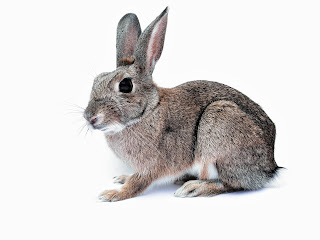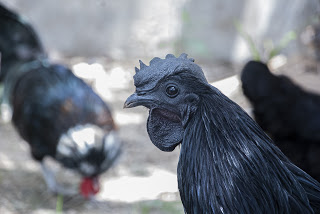Rabbit Farming In India And How To Take Care Of A Rabbit
Before we come to know the farming of Rabbit, let us know a little bit about Rabbit.
The Rabbit comes from a family known as "Liporidae" and they are the smallest mammals. The rabbit is also called as Bunny in some parts of the World, Rabbit is breaded for a companion, to consume as a food and for its wool.
Rabbit Farming In India
The Rabbit farming in India has an immense scope, Rabbit farming can be done as employment to earn an income and Rabbit farming doesn't require huge space as compared to other livestock, they are also breaded because of its meat, people say that they are low in fats and are very rich in protein, and they develop wool which can be used for clothing which is best as compared to Sheep wool.
Financial Assitance
Several Banks and NABARD provides loan assistance to those who wish to farm Rabbit, the banks shall provide loans by looking at the infrastructure and valuates how much financial assistance should be provided.
The Banks provide required time to pay the loan, the required time may go up to 5 years depending on the financial assistance they provided, and the banks accept instalments monthly or quarterly.
Several banks and insurance companies now provide insurances to the animals, the insurance schemes may vary from annual to long term policies.
Breeds of Rabbit
There are numerous breeds available in India for farming which include:
a. Newzealand White
b. Newzealand Red.
c. Grey Gaint.
d. White Gaint.
e. Californian.
f. Dutch.
g. Flemish Gaint.
h. Siviet Chinchilla
i. Angora.
The foremost activity in the farming of the Rabbit is by providing nutritious food and keep them healthy. one can provide good quality of Carrots, Cabbage leaves, other vegetables with clean and fresh water to drink. The Rabbits also like to consume grains.
The best time to breed Rabbits when they are 4 to 6 months in age and always healthy and disease-free Rabbits are to be raised.
How To Take Care Of A Rabbit
There are many ways a Rabbit can be cared:
1. Rabbit can be Housed indoors or they can be left in a room with proper ventilation and floor is provided with mats or towels, the Rabbit can also be kept in an iron cage. The rabbits should not always to be kept in an iron cage, they can be let out to move freely and get some exercise.
Rabbit can also be kept in the backyard of the house by constructing sheds, the sheds should be constructed with proper ventilation and with proper space for movement of Rabbit.
The Rabbit should be looked after carefully so that they cannot able to chew mats, towels and household articles.
2. Rabbit has a natural habit of peeing at a place when it is stranded, to discontinue this habit a litter box of small size can be used by placing waste paper at the bottom of the litter box and hay can be placed on the top of the litter box. When Rabbit comes to eat hay at the same time they pee also, by this method Rabbit develop to use the litter box as days passes, a litter box can be placed near their food or water bowls
3. The rabbit should be washed regularly to keep them healthy, if any excess fur is found on a Rabbit it should be removed, ears of the Rabbit should be checked regularly to see any mites if found it should be destroyed.
4. The Rabbit should be provided medical checkup regularly to maintain Rabbit with good health and disease-free.
Common Disease Seen In Rabbit
A common disease that is seen in Rabbit are:
1.Swellings: Can be seen in Head portion of the Rabbit, this is due to abscesses.
2. Holly Mistletoe and Ivy Poising: If the Rabbit has eaten any poisonous substance this can occur. symptoms could be diarrhoea, Paralysis etc.
3. Loss Of Appetite: This could be due to abdominal pain or swelling.
4. Loss Of Balance Or Head Tilt: This could be due to infection in the brain of a Rabbit or infection in the ear.
5. Myxomatosis: This is a virus, and it is spread by mosquitoes or fleas.
6. Paralysis To Limbs: This is due to spinal injury.
7. Rabbit Viral Haemorrhagic Disease: This is a virus and it can be due to contaminated food, this disease occurs between Rabbits.
8. Breathing Difficulties: This is due to respiratory infections or heat stress.
9. Ear Mites: This is due to Parasites.
10. Flystrike: This is due to a green bootle fly known as Lucilia sericata, this fly lays about 100 to 200 eggs and eggs, in turn, develop into maggots and eats flesh and affects Rabbit's bottom, tail, back and belly.
If any of the above symptoms are found medical advice is needed to protect the animal.








No comments
New comments are not allowed.